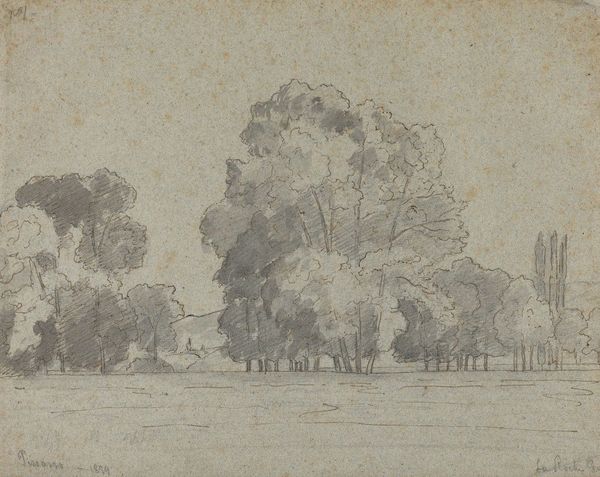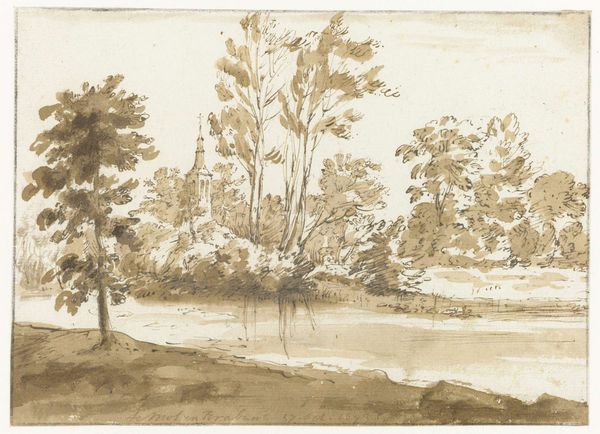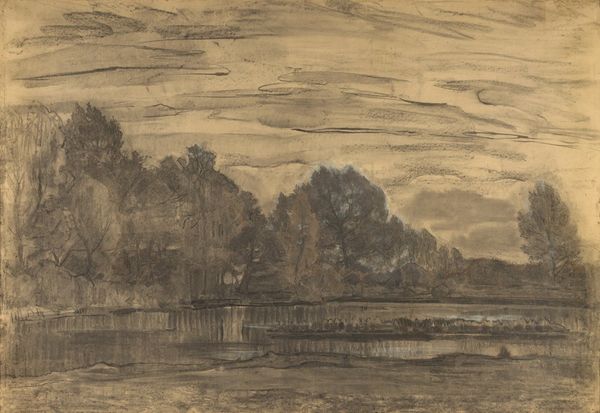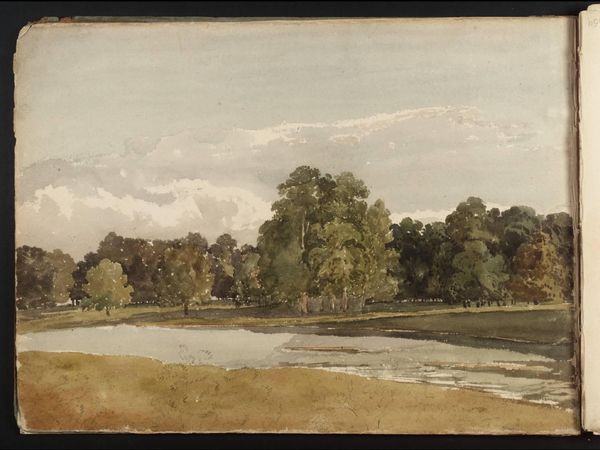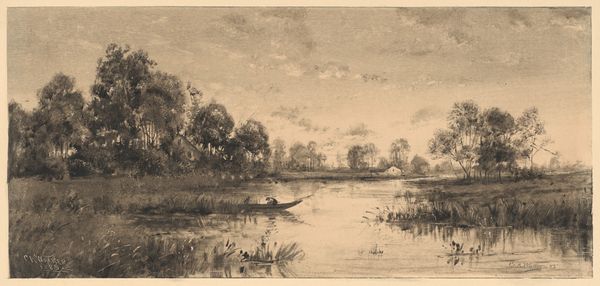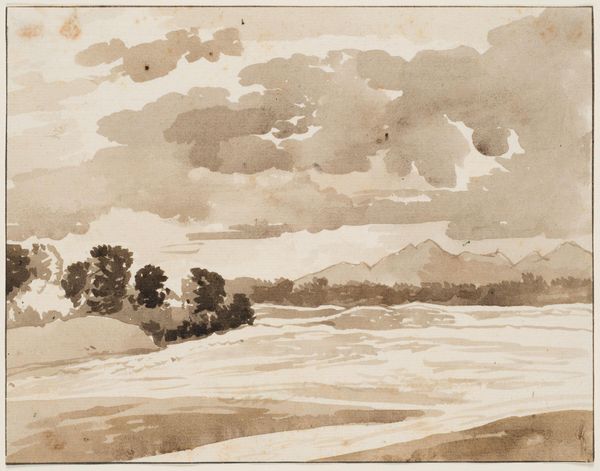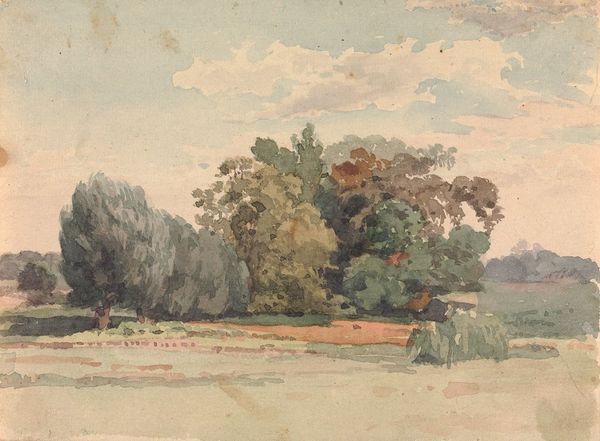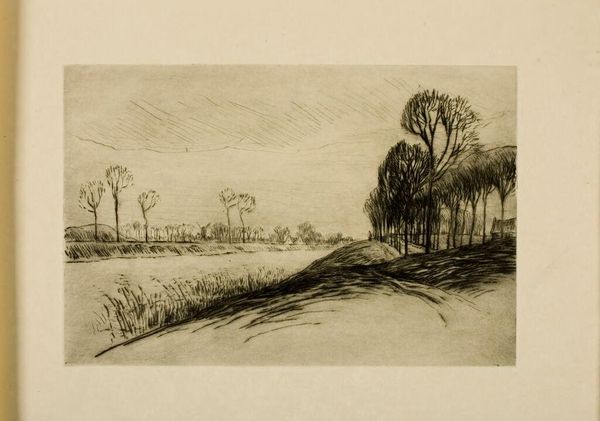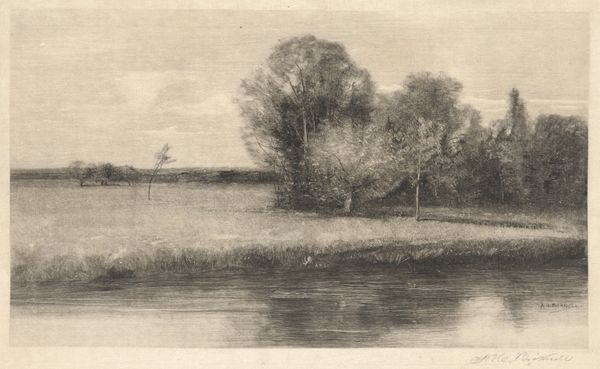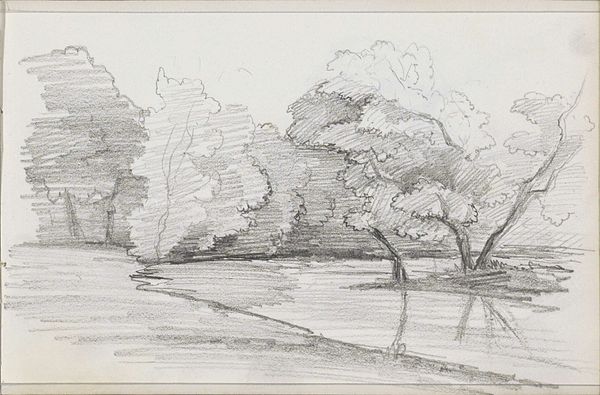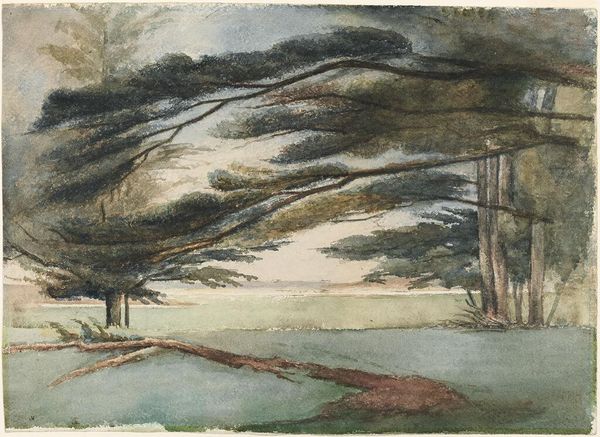
Dimensions: support: 270 x 384 mm
Copyright: CC-BY-NC-ND 4.0 DEED, Photo: Tate
Curator: James Duffield Harding's "Twickenham" presents a landscape imbued with a rather melancholic atmosphere, wouldn't you say? Editor: Absolutely, there's a quiet, almost somber quality to the monochrome palette and the way the trees dominate the scene, creating a visual weight. These trees almost become symbolic, silent observers over time. Curator: Harding was quite popular in his day, a master of the picturesque. The Tate holds this artwork. One wonders about the social appeal of such scenery, perhaps as an escape from industrializing urban centers. Editor: Indeed. The image carries a yearning for a rural past. It is a reflection of societal anxieties regarding industrialization. Curator: Perhaps this landscape is more than just a view of Twickenham; it's a reflection of cultural memory. Editor: I agree. It allows us to remember a time of beauty and loss that is still relevant today.
Comments
Join the conversation
Join millions of artists and users on Artera today and experience the ultimate creative platform.
tate 8 months ago
⋮
The son of a drawing-master living in Deptford, London, Harding was taught by Samuel Prout before being apprenticed to an engraver. He abandoned engraving after a year and devoted himself to painting in watercolour, teaching and lithography. In 1824 Harding made the first of several trips to Italy, and followed Prout in specialising in the continental picturesque. Harding became the foremost drawing-master of his day; John Ruskin was among his pupils in the 1840s. He was well-known for his illustrations in the Landscape Annual as well as for the lithographs he made for his own published portfolios and manuals. Gallery label, September 2004
